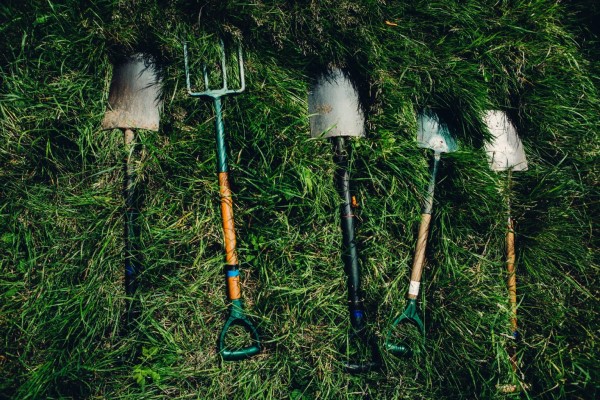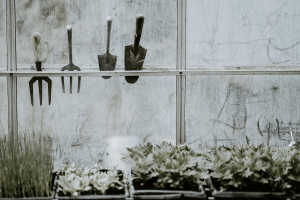We explore the nuts and bolts of how to start a community garden with Ethical.net, this time tackling finding a site and first steps towards sourcing funding.
How to find a site
Some community garden schemes begin because a piece of land in need of improvement has already been identified. In other instances, the idea for a community garden comes before a clear idea of where to put it. Community gardens can vary greatly in terms of size and scope; therefore many different pieces of land can be considered, so it’s good to keep a fairly open mind.
Looking for a site often begins with a walk around your area. If you see a potential site or vacant lot, try to determine who owns it. Ask around, or do a search of records on the Land Registry website. Your local authority can also be a good source of information; ask them for records of land ownership.
Council-owned land may have the potential to become a new community garden: a portion of a park or school field, or the grounds of a public building might be available. It never hurts to ask. Check the council’s Local Development Plan or Local Area Plan to see how your scheme might fit in. It can be a good idea to speak with town or parish councils as well.
If land you are eyeing up is under private ownership, approach owners directly to see whether a deal might be agreed. Private landowners, farmers, charitable organisations, and big businesses that own land may be amenable to discussion.
Think about whether you will share, rent, or even buy land for your community garden. Obviously, whatever you choose will affect what’s available to you. It may be worth contacting your local authority to determine whether they have a Community Asset Transfer (CAT) strategy, and will lease land at an affordable rate.
How to identify suitable land
Of course, you will have to determine whether a potential site will be suitable for your needs. Here are some important questions to consider:
- How does sunlight fall on the site? How many hours of sunlight does it receive? Is there enough light available to grow food?
- Does the site have access to mains water, or would it be possible to capture enough rainwater on site?
- Are there utilities on site (power, sewerage, etc)? If required, would connection be possible?
- What plants and/or wildlife is already present? Are there any conservation issues to consider?
- Has the land been contaminated by previous use? (For example, are heavy metals an issue?)
- Is the site large enough for the community’s needs?
- Is the site safe, or can it be made safe for the group to use?
- Can the site be made accessible to all members of your community?
- Are any other parties interested? (Do you have competition for the site?)
- What are the neighbours like? Would they be amenable to your scheme?
- Do any planning restrictions apply? (For example, you may have to consider listed buildings, roadways, parking, etc.) Community gardens may fall under permitted development – but it is important to check. Any small structures should not be built without checking with relevant authorities. (You can also speak with the Community Land Advisory Service or Planning Aid before choosing your site.)
- Do any rights of way or servitudes apply on the property? Who will have access to the site?
- Would any bylaws stop you from doing what you intend?
Make sure that you think through all potential issues before deciding that a site is the right one for you.
Sharing and shaping your vision
Whether for funding purposes (more on this later) or simply to inspire, it is very important to share your vision with the wider community and accept feedback. While you will already have a core group who have been involved from the beginning, you should reach out to others in your community to get more people interested and on board.
Even if not directly involved with the garden, sharing your vision will help others feel a sense of ownership over the idea, and that your project really is for the whole community. Consultation and community support is crucial for some types of funding, but more than this, it can help ensure that your garden really is a community garden.
To consult the community about your new scheme:
- Hold a public meeting.
- Pop fill-out-and-return forms through letterboxes.
- Hand out flyers, forms, or similar, or talk with people at a local event.
- Conduct a survey, making sure all sectors of your community are represented.
Once you have a clear community response, and have shaped your plans more fully, you can spread the word further through:
- Simple events (a picnic, for example; if you have not yet secured your site this could be in a local park).
- A stall at local events.
- Presentations or talks to local groups or organisations.
- Press releases, posters, articles in the local press, information booklets, etc.
- A regularly-updated website, social media, blog posts, online articles, and emails to new contacts.
Finding funding
It will not only be important to think about the land itself, and how it will be used, but also about any planning issues and details of the lease or rental agreement.
Remember to negotiate and remind landowners of the value you will be adding to the site, and to the community, to get the best deal.
However, regardless of how good a deal you manage to get on the land, there will still be costs involved in starting a community garden. Even if using the land for free, money will be required for saplings, plants, or seeds, as well as tools and other materials (eg, for raised beds, rainwater harvesting, compost bins, etc), and perhaps sheds or other buildings too. There will also be ongoing costs to consider.
Developing a working committee and getting organised
You should create a working group to prepare a business plan or action plan. A governing document or constitution will also be helpful to consolidate aims and objectives. Some form of management committee will likely also be necessary to keep things running smoothly forward.
How you raise funds for your project will depend in part on what type of organisation you choose to be:
- An unincorporated organisation.
- An incorporated organisation.
- A charity.
Check out Select-a-Structure Tool; a helpful tool for deciding which legal structure will be best.
Part 3 coming soon, covering further funding considerations, planning and designing. Catch up on Part 1 here. Find the original post by Elizabeth Waddington on the Ethical.net blog. Main image by dylan nolte on Unsplash.
 About the author
About the author
Ethical.net is a collaborative platform for discovering and sharing ethical alternatives, whether purchasing from a social enterprise, thrift shopping, or learning how to fix your old phone instead of buying a new one. They aim to make ethical the new normal.









1 Comment
As Sarah pits out, the question of planning restrictions are relevant “(For example, you may have to consider listed buildings, roadways, parking, etc.) Community gardens may fall under permitted development – but it is important to check. Any small structures should not be built without checking with relevant authorities.” Community gardens are no different from any other agricultural use in terms of the carrying out of growing and grazing so long as there is an element of trade or business involved. The regulations in terms of building etc are at https://www.legislation.gov.uk/uksi/2015/596/schedule/2/part/6/crossheading/class-a-agricultural-development-on-units-of-5-hectares-or-more/made?view=plain. For holding less than 5ha follow on. In my opinion the crucial aspect is whether the planners care about the appearance or use and this will depend on the attitude of local people. Focus on limiting the negatives of prominent or badly maintained buildings or car parking, and on the positives (eg helping local groups, people with learning difficulties, Alzheimers sufferers) to minimise the likelihood of having to engage with the local planning authority. The legal limitations of building on small acreages could suggest doing so without permission and in the knowledge that for agricultural purposes, such building would be immune from enforcement after 4 years. It is a good idea to have in mind in thero design and erection, that such buildings might have to be relocated if negotiating the planning system becomes too much of a problem